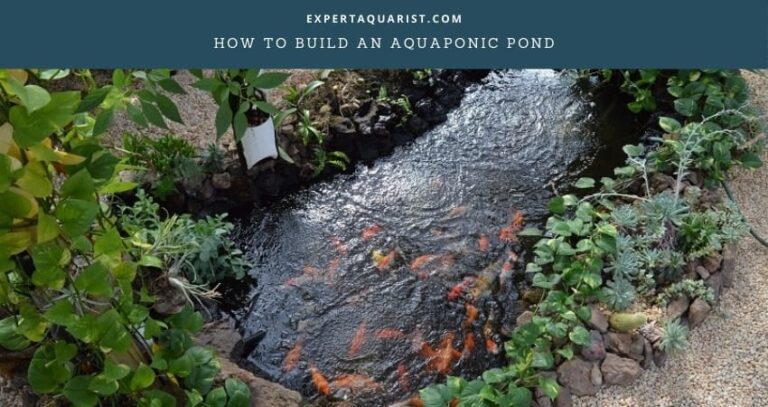For maintaining the water quality of your fish pond, you need an excellent filtration system. It is one of the essential factors to support the long-term health of a pond.
Without a filter, pond inhabitants are at risk of suffering from water parameter imbalance, algae problems, and bacterial problems. Even if you have a filter, if you don’t clean it regularly, it’s almost the same as not having one.
To clean a pond filter properly, switch off the pump, disassemble the filter box, clean it, and then put it back up.
If you want to know more about how to clean pond filter thoroughly, you’ll have to keep scrolling down a bit.
Pond Filter Cleaning
In a pond or any other aquatic system, there can be various kinds of filtration systems. But the most important ones are mechanical and biological filters, as many owners use them both in combination.
Chemical filters are also very important for the well being of the pond. Since all three of them are widely popular, Why don’t I show you how to clean all three of them!

Cleaning Procedure of Mechanical Filter
Mechanical filters trap waste and debris. That’s why, you will find filter pads, sponges, or cartridges in such kinds of filters.
In mechanical filters, washing is pretty simple. You can freely wash the sponges or filter pads with water; all you need is a garden hose. It is not harmful to beneficial bacteria, so you can use regular tap water without any worries.
Although using the pond water to clean the sponges or filter pads is encouraged, it might not smell fresh but the fish in your pond will appreciate it. Keep washing until the water runs clear.
After washing, I recommend squeezing out smaller particles before placing them back in the filter again. You’ll need to clean them weekly at least and might have to clean the filter media more than once if there is low water flow from the filter. Hand scrub if necessary.
When proper cleaning is done, put back the sponge, plastic balls, or cartridge one by one. Annual maintenance is a must.
Cleaning Method of Biological Filter
A biological filter works as a mini sewage system. In simple terms, the micro porus filter media within the filter makes a huge surface area that works as a home for millions of good helpful bacteria in the pond.
This contains beneficial bacteria that convert waste materials and toxic ammonia and produce less toxic nitrate. It’s known as the biological cycle of a pond.
Cleaning the biological filters is a tad harder than mechanical filters, mostly because of the conundrum of deciding when to clean them. Some clean it way too regularly, not letting the beneficial bacteria thrive, or being late to clean it, resulting in clogging. The balance ticks off a lot of owners.
It’s okay to clean the biological media after they’re totally covered in debris. When beneficial bacteria start to colonize, the media will begin to change color, which is completely fine.
Just don’t let it be immersed entirely in debris, that is when oxygen fails to enter the media, as the bacteria need oxygen to live.
In short, as long as there isn’t a thick buildup of debris, your filter is fine, even if it is discolored.
But what if the media is fully clogged? Then it is necessary to use de-chlorinated water and remove all the accumulated gunk. Another alternative you could indulge in is replacing the media altogether.
You have to clean the filter media once a year to maintain the flow system. Clean and wash out the filter in the pond water till it is fully cleaned from debris, mud, and clays.
One thing you must remember, never to use tap water or chlorinated water to clean the biological filter; it might kill all the beneficial bacteria, creating a disaster for you.
Cleaning Process for Chemical Filter
After discussing the two most popular filters’ cleaning process, let’s talk about the filter family’s quiet cousin: the chemical filter. While they are not as necessary compared to the mechanical or biological filter, you’ll be relieved to have one around if you end up needing one.
Chemical filters remove what the other two can’t excel at removing, chemicals. There are some chemicals that can harm your pond if unnoticed, like ammonia, heavy metals, trace elements, copper, hydrogen sulphide, nitrate etc.
The most popular way of filtering in this system is using activated carbon. And for cleaning the chemical filter, all you need to do is replace the carbon. If the water in your pond seems cloudy, do it immediately.
As for how to clean it, it’s almost the same as a mechanical filter. You have to siphon out some water from the pond, wash the carbon with it until the water passing through it is clear.
Checking up on your chemical filter every week is a safe option.
Pond Filter Cleaning Schedule
No matter how much you filter it, your pond will eventually get dirty anyway. That’s a sign that you can’t slack off anymore and start cleaning.
Although I have mentioned the most optimal schedules for cleaning different filters above, I understand that you’re human, and you might not always have the time to stay by your pond.
But at the very least, you should not cross the thresholds I’m going to mention below:
Mechanical filters
Out of all the filters, you need to clean them up the most. You can’t go without cleaning the mechanical filter for more than a month. Any more, and you’re calling trouble towards you.
Biological filters
While biological filters don’t follow a rigid schedule, they do need attention and sometimes owners end up making the wrong call. Until the filter media is filled with debris, you can let it be. But make sure to immediately remove all debris when it’s overloaded.
Chemical filters
These rules are the most relaxed for chemical filters. All you gotta do is swap the activated carbon for a new set whenever the water turns cloudy. Simple enough, isn’t it?
How To Clean A Pressurized Pond Filter
Filter Cleaning Tips
- Clean only the filter media as the manufacturer instructed, when absolutely necessary.
- When cleaning, always rinse the media in a plastic bucket containing pond water.
- Turn off the power supply before starting cleaning to avoid shocks.
- Use layers of different porosity in the mechanical filter for efficient filtration.
- Make sure the filter box is big enough for the pond size. If the size of the filter is too small for the pond, then it won’t be effective.
Final words
A pond doesn’t need to have a filtration system unless you intend to let fish roam inside it; then, it becomes a must-have.
If that is the case, then not only do you need one, but you also have to keep it clean all the time. I hope your concept about how to clean pond filter will be much clearer now.






